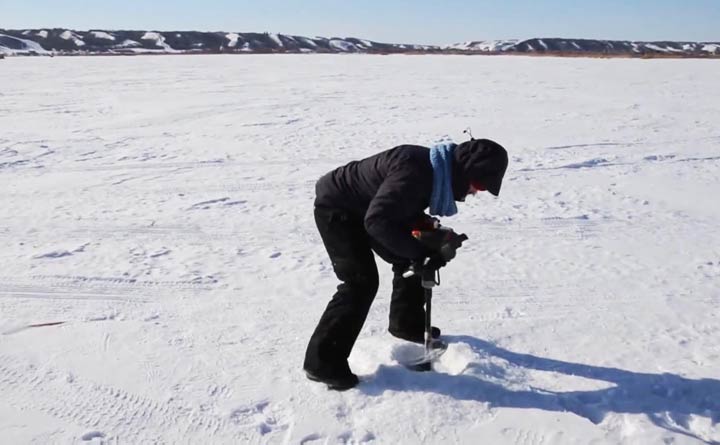The Saskatchewan Ministry of Environment is reminding people about ice safety with the arrival of colder temperatures.

The ice thickness will depend on the particular water body and the surrounding conditions.
Officials said water does not freeze at a uniform thickness and ice strength can vary considerably from one area to another.
As a guideline, there should be a minimum of 10 centimetres of ice to walk on, 20 for snowmobiling, 30 for driving a car or light truck on, and over 30 to support a heavy truck.
WATCH BELOW: Snowmobiler rescues himself from lake

Thickness is just one factor when evaluating ice safety.
The ministry advises people to be cautious on all frozen water bodies. Here are some ice facts to be aware of:
- slush indicates that ice is eroding from above and below;
- avoid if thawed, then frozen again;
- avoid if near moving water;
- large, deep lakes take longer to freeze and are slower to melt than smaller lakes; and
- changing temperatures can cause thermal cracks and pressure ridges, which are indicators of unsafe ice.
People who plan on ice fishing can find more information on the 2018 Saskatchewan Anglers’ Guide online.
The Saskatchewan Water Security Agency also advises a reservoir water release will occur at Grant Devine Dam to reach its Feb. 1 target level. This release will delay the development of ice downstream on Moose Mountain Creek, and Souris River.
For weather on the go, download the Global News SkyTracker weather app for iPhone, iPad or Android.


Comments